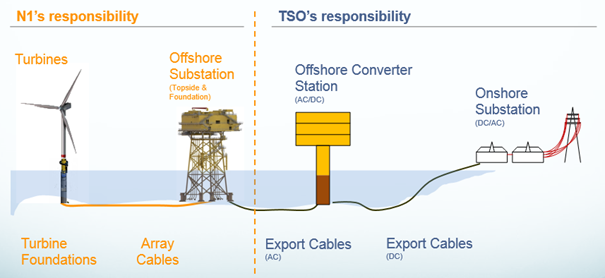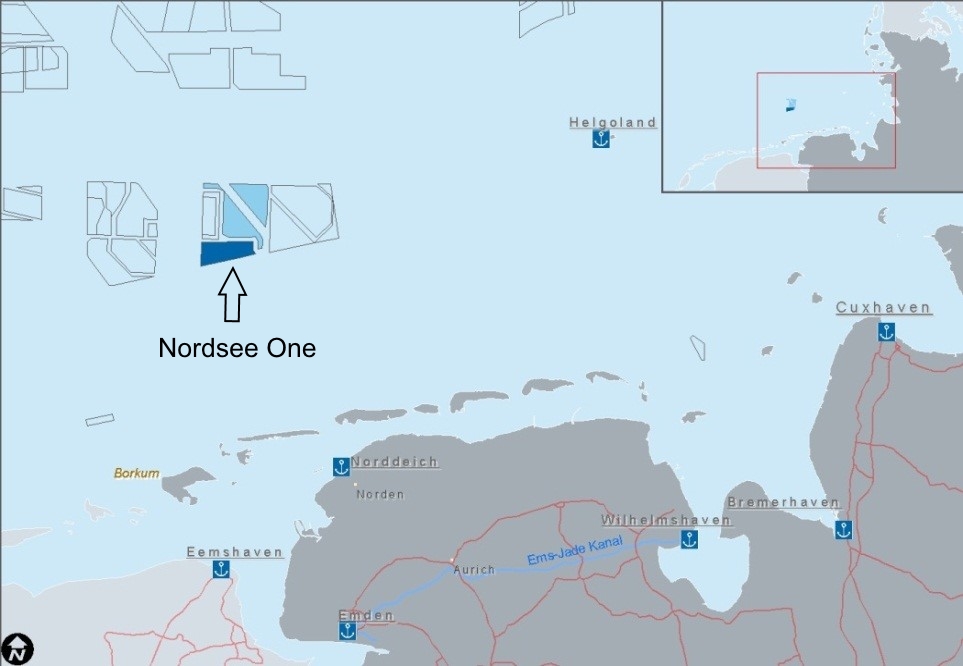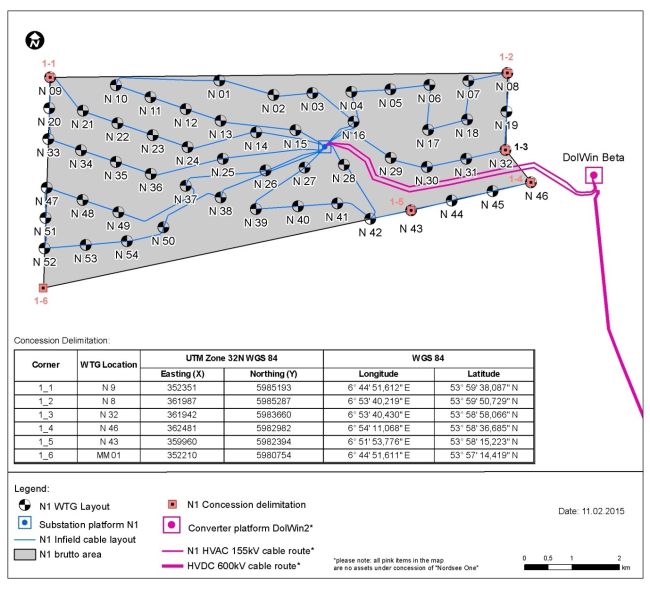Permitting
The permit of the Bundesamt für Seeschifffahrt und Hydrographie (BSH) for Nordsee One was issued in April 2012. This was the result of a permitting process spanning several years. During this process multiple interests such as fisheries, military use, environmental protection areas, shipping, mining, existing cables, and pipelines were considered. The first application documents were submitted in 2006 and subsequently these were completed in the following years. The permitting process also contained a transparent consultation and hearing process. All affected parties were invited to hand in their statements and the results were discussed in a meeting lead by the BSH. The permit is publicly available on www.bsh.de. During operation the project also must fulfil several permit-obligations imposed by the BSH. Via certification by an independent body, Nordsee One is ensuring that the techniques chosen for the different elements of the wind farm are state-of-the-art and will operate safely and in an environmentally friendly manner.Power
The average wind speed at the site is approximately 10m/s which creates an output of up to 3,620 net full load hours. This is more than twice as much as would be expected from a good onshore coastal site, justifying the higher cost for offshore installation and maintenance. The 54 turbines of 6 MW-class will produce on average 1.2 billion kilowatt hours per year.This means that Nordsee One is able to provide the power consumption of approximately 400,000 average households and is saving over one million tons of CO2 compared to a conventional coal fired plant.
Grid Connection
Under German regulations the responsible transmission system operator has to plan, build and operate the grid connection from the connection point on the wind farm's offshore substation to onshore and over land to the grid connection point.The AC power produced by the Nordsee One wind turbines is transformed from 33kV to 155kV on the Nordsee One offshore substation. The Nordsee One offshore substation is connected to the grid via the Dolwin Beta HVDC transmission link. This connection consists of two 155kV AC sea cables of length 7.5km running from the Nordsee One offshore substation to the Dolwin Beta HVDC converter station, where the power is converted from AC to DC. From the Dolwin Beta HVDC converter station, two 320kV DC sea cables45km in length and two land cables 90km in length transport the power to the onshore grid connection point at Dörpen-West, where the power is converted back into AC and fed into the existing 380kV electricity grid.

Performance / Power (ungeprüft)
The average wind speed is about 10m/s which creates an output of up to 4500 full load hours. This is more than twice as much as on a good onshore coastal site which justifies the higher cost for offshore installation and maintenance. The 54 turbines of the 6MW-class will produce in average 1,3 billion kilowatt hours. This already includes the losses of the power transformation and the power-transport to the Tennet feed-in-point.This means that Nordsee One is able to cover the power consumption of 400,000 average households and will save over a million tons CO² compared to a conventional coal fired plant.
Permitting (ungeprüft)
The permit of the Bundesamt für Seeschifffahrt und Hydrographie (BSH) for Nordsee One has been issued in April 2012. This permit was the result of a permitting process which was going across several years. During this process the several interests like fishery, military use, environmental protected areas shipping, mining and existing cables and pipelines had to be brought into a balance. The first application documents have been handed in in 2006 and subsequently been completed during the following years. The permitting process also contains a transparent consultation and hearing process. All affected parties have been invited to hand in their statement, the results have been discussed in a meeting lead by the BSH. The permit is publicly available on www.bsh.de. Also during design, construction and operation the project has to fulfill several permit-obligations accompanied by the BSH. Only if several release steps have been achieved Nordsee One is allowed to start construction. After completion Nordsee One has to proof that everything has been constructed as it was planned, certified and approved to obtain the permission to operate the wind farm. Via a certification by an independent body Nordsee One ensures that the technique chosen for the different elements of the wind farm is state-of-the-art and operates safely and environmentally friendly.Location
The Nordsee One wind farm has a total area of 41.3 km² and is situated approximately 40km north of the island of Juist, between the shipping lanes Terschelling-German Bight and German Bight Western Approach. The Nordsee One wind farm consists of one offshore substation platform and 54 wind turbines which have been installed in depths ranging between 26m and 29m.
The Nordsee One wind farm consists of one offshore substation platform and 54 wind turbines which have been installed in depths ranging between 26m and 29m. 